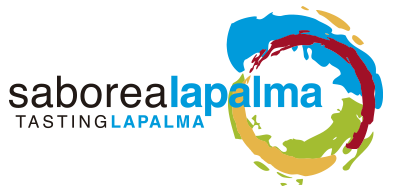
24 Apr A study led by the IPNA-CSIC analyses the differences between Canarian craft beers and industrial beers.
- Aspects such as mycotoxin profile, pesticide residues and contaminants and elemental composition were studied.
- The toxicological profile of all beers was safe, but there were clear differences between the two beers.
The magazine Toxicology Reports has just published the results of a comparative analysis between Canarian craft beers and Spanish industrial beers which found that there are differences between the two types in aspects such as mycotoxin profile, pesticide residues and contaminants and elemental composition. In the study, led by Eva Parga Dans y Pablo Alonso Gonzálezboth members of the Institute of Natural Products and Agrobiology (IPNA) of the CSIC, Scientists from the Institute for Research in Biomedical and Health Sciences (IUIBS) of the University of Las Palmas de Gran Canaria and the Institute for Biomedical Research in Physiopathology of Obesity and Nutrition (CIBERObn) have also participated.
In the article Comparative analysis of mycotoxin, pesticide, and elemental content of Canarian craft and Spanish mainstream beers (Comparative analysis of the content of mycotoxins, pesticides and elements in Canarian craft beers and conventional Spanish beers.) describes in detail the analysis of a total of 42 beers: 23 craft beers produced and sold in the Canary Islands and 19 industrial beers from the Canary Islands and Spain.
The most salient finding in relation to the mycotoxin profile was the fact that craft beers did not contain any of the mycotoxins analysed. However, all industrial beers were contaminated with at least one mycotoxin and almost half of the samples analysed showed the presence of several mycotoxins. However, the concentrations were well below the legal limits.
With regard to the pesticide residuesIn the case of craft beers, it was the craft beers that showed higher average concentrations than the industrial beers. This is probably because the filtration and pasteurisation used by industrial breweries can remove residues from the final product, whereas craft beers tend not to filter or pasteurise their products. Following this finding, health-related claims about the higher naturalness and quality of craft beers can be questioned in the case of pesticide residues. Again, it should be noted that the only beer with no residues of any kind was certified organic, which shows that, in this case, certification could guarantee consumers that they are drinking a residue-free beer. In any case, the authors of the article indicate that this hypothesis requires further research comparing organic and conventional beers.
Finally, the elemental composition of craft and conventional beers differed in both the order and concentration of the different macro and micro elements analysed. Statistically significant differences were found, with several orders of difference for various elements. The explanation for these differences could be based on both endogenous factors (mainly the raw materials and water used) and exogenous factors (contamination from external sources and brewery machinery). Nevertheless, the levels of most elements remained within the ranges reported in the literature and none of toxicological interest showed elevated levels.
The authors of the article point out that these results are of potential interest to brewers, as the presence of these compounds has an impact on the quality and processing of the product, from brewing to storage. Information on the nutritional and toxicological profile of beer is also important for consumers as it assures them that both conventional and craft beers are safe alcoholic beverages that largely meet legal requirements.
In the opinion of the researchers, specific maximum residue limits for the presence of mycotoxins, pesticides and toxic metals in beer need to be set both at EU and international level. The absence of such limits hampers the development of literature and research in this area. Furthermore, their establishment would serve to prevent the marketing of potentially contaminated beer and thus protect the consumer.
Article:
Pablo Alonso González, Eva Parga Dans, Iván de las Heras Tranche, Andrea Carolina Acosta-Dacal, Ángel Rodríguez Hernández, Ana Macías Montes, Manuel Zumbado Peña, Octavio Pérez Luzardo. Comparative analysis of mycotoxin, pesticide, and elemental content of Canarian craft and Spanish mainstream beers. Toxicology Reports, Volume 10, 2023, Pages 389-399, ISSN 2214-7500.
https://doi.org/10.1016/j.toxrep.2023.03.003
This work has been made possible by:
- Grant RYC2018-024025-I funded by MCIN/AEI/10.13039/501100011033 and by El FSE invierte en tu futuro awarded to Eva Parga Dans.
- The Training Aid Programme of the Regional Ministry of Economy, Knowledge and Employment of the Canary Islands Government, granted to the University of Las Palmas de Gran Canaria through the European Social Fund through a postdoctoral scholarship to the author Andrea Acosta Dacal (APCR2022010003).
About the Institute of Natural Products and Agrobiology
The Institute of Natural Products and Agrobiology (IPNA) is part of the network of research centres of the Spanish National Research Council (CSIC) and the State Research Agency of the Ministry of Science and Innovation. Due to its nature as a multidisciplinary centre, the IPNA's activity ranges from basic research to technological development and focuses on the areas of chemical sciences, agrobiotechnology, volcanology and biodiversity.

